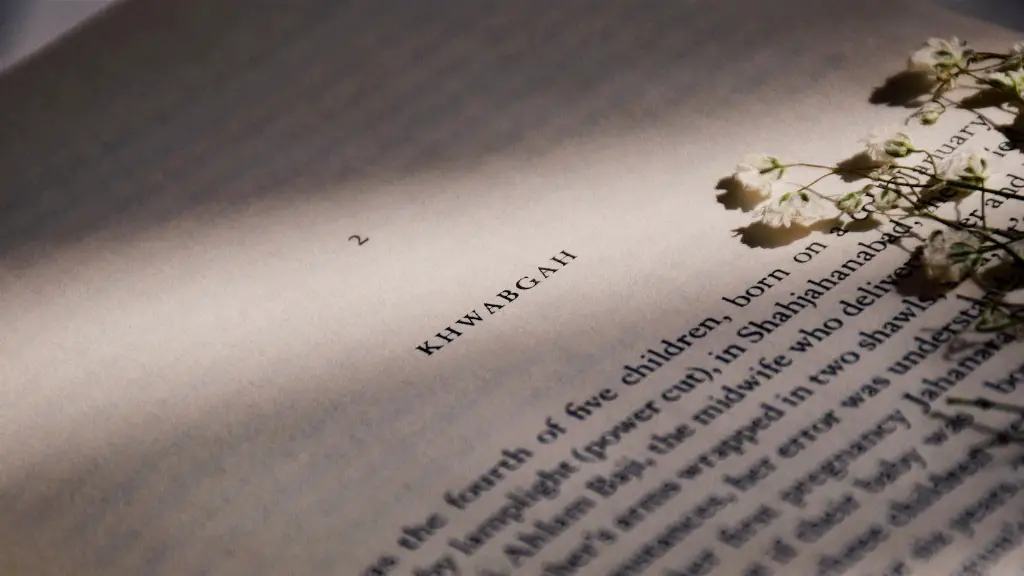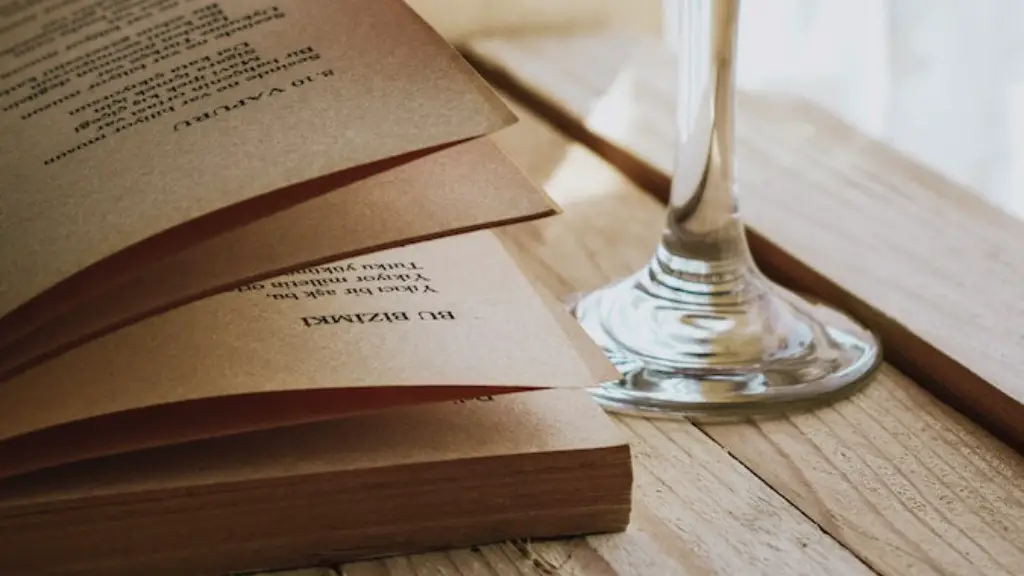Flash Poetry refers to a type of poem that uses fewer words and imaginative phrasing to tell a story, convey emotion, and express ideas. A traditional poem, in contrast, typically uses far more words to make its point. Flash poems are meant to be brief, thought-provoking, and memorable.
As with other forms of poetry, the goal is often to capture a moment in time or evoke an emotion. Flash poetry often makes use of metaphors and vivid imagery to evoke strong feelings. However, because of the short length, the poet also needs to get their point across quickly and concisely. This makes flash poetry a intriguing and unique art form.
Flash poetry puts an emphasis on brevity and creativity. As such, poets must choose their words carefully and make sure that each line is impactful and thought-provoking. Flash poets must condense and compress their ideas in order to capture the essence of what they want to say in a very limited space. This often means that poets must use strange and unorthodox language and phrasing to convey their message.
The main challenge of flash poetry is to say as much as possible within the tight word count. This means that poets often need to be creative in their use of language, as well as in the structure of their poems. They also need to be aware of their audience and what they are trying to convey. Flash poems are generally read aloud to an audience, which gives poets the opportunity to add a more dramatic and engaging element to their readings.
Experienced flash poets often use devices such as alliteration, rhythm, repetition, and rhyme to add extra emphasis to their work. These tools are great for making a poem both memorable and engaging. By utilizing these devices, poets can help add an additional layer of depth and meaning to their work.
Though flash poetry is a relatively recent form, it has quickly become popular among both poets and readers alike. Flash poems are often shared on social media, and some even become popular internet memes. It is a challenging, but rewarding form of poetry that allows poets to express their creativity in a unique and mesmerizing way.
Experimentation
When writing flash poetry, it is important to experiment and explore different techniques. To create a successful and thought-provoking poem, writers should not be afraid to push the boundaries and try new approaches. Poets should experiment with form and structure, as well as language. This enables them to discover their own unique style and create a poem that truly expresses their thoughts and feelings.
One technique that can be useful when experimenting is to choose a few words, or a phrase and then expand on them. Poets can also look at their work from a different perspective, such as trying to express the same idea as a haiku, or as a free-verse poem. By exploring different techniques and approaches, writers can come up with interesting and unique ideas for their flash poems.
Experimenting also means that writers should be willing to take risks and sometimes write outside of their comfort zone. This can be a great way to stretch the imagination and come up with new and exciting ideas. Writers should not be afraid to be bold and explore different forms, styles and techniques so that they can truly express themselves in the most creative and vivid manner possible.
Exploring Emotion
Though brevity is an important element of flash poetry, it does not necessarily mean that the poem has to be a short and simple representation of an idea. Flash poets can explore complex emotions and thoughts in their poetry, making use of vivid imagery and descriptive language. Even with the limited word count, it is possible to explore powerful ideas, allowing readers to gain a deeper insight into the poet’s perspective.
By exploring one’s emotions and beliefs, poets can create strong connections with their readers. This allows the poem to have a more profound impact, evoking strong emotions and creating an unforgettable experience. Poets should strive to evoke the same emotions that they are experiencing while writing the poem. This can be achieved by using the right words and evocative language.
Exploring emotion in flash poetry can be a powerful and transformative experience for both reader and writer alike. It allows readers to gain a deeper understanding of what the poem is trying to convey, as well as feel a connection to the poet themselves. For writers, writing about powerful emotions can be cathartic, helping them to express and understand their feelings in a creative way.
The Power of Flash Poetry
Flash poetry has become increasingly popular due to its ability to tell powerful stories in fewer words. As such, it is an excellent way to express ideas, emotions, and personal experiences. Despite its short length, a flash poem can make a lasting impression, easily accessed and understood by a wide audience.
Flash poems can be used for a variety of purposes, whether it be for storytelling, expressing feelings, or making a political statement. It can be used to reach out to others and share powerful stories in a concise and impactful way. For writers, flash poetry can be a powerful tool for expressing their thoughts and feelings in a creative manner.
Flash poems also make reading more accessible and enjoyable. They are a great way to engage readers, no matter their level of poetry knowledge. By reading short, easily understandable poems, readers can appreciate the beauty of language and the power of poetry.
Overall, flash poetry is a great way to tell stories, express emotion, and explore ideas in an interesting and imaginative manner. Its short length allows it to be easily shared and enjoyed by many, while its creative nature allows it to be an incredibly powerful tool for both readers and writers.
Opportunities for Education
Flash poetry is a great tool for teaching as well. It can help to connect students with literature, and show them how powerful language can be even in a limited space. It is also a great tool for exploring emotions and expressing ideas in a creative and engaging way.
Flash poems can be used in a range of educational contexts, from teaching students about the power of language and creative writing, to exploring different topics and complex feelings. Flash poems can also be used to teach students about different poetic devices, such as alliteration, rhythm, and repetition.
Flash poetry can also be used as a starting point for students to explore different forms of poetry, such as haikus and free verse. By writing flash poems, students can practice their writing skills, while also expressing and developing their own creativity and imagination.
In summary, flash poetry is a great way to engage, educate, and entertain readers and writers alike. It allows poets to explore complex ideas and emotions in fewer words, while also giving them the opportunity to experiment and discover their own unique style.
Creative Connections
Flash poetry can also be used to create powerful connections with readers. By telling stories and expressing personal experiences, poets can create a bond with their readers that can be both emotionally and intellectually stimulating. Readers can connect with the poet on a deeper level and gain a better understanding of the message behind the poem.
Flash poems can also help readers to reconnect with forgotten and overlooked feelings and emotions. By exploring emotions through vivid imagery, readers can relate to the poet on a much deeper level, helping them to empathize and understand the poem in a more meaningful way.
Finally, flash poetry can also be used to break down walls between different readers and writers. By exploring shared experiences and perspectives, readers can gain a better understanding of different cultures and worldviews. This helps to create more meaningful connections, allowing readers to appreciate new perspectives and ideas.
In conclusion, flash poetry is a powerful tool for connecting and engaging both readers and writers. Through the use of vivid imagery and emotive language, poets can share powerful stories and create meaningful connections with their readers.
The Future of Flash Poetry
As flash poetry continues to gain popularity, it is likely that more and more poets will explore this unique form of poetry. With its powerful potential for storytelling and creativity, it can be a fascinating and rewarding art form. And as the Internet has made sharing ideas easier, it is likely that flash poetry will continue to grow in popularity.
The future of flash poetry also lies in how poets will continue to experiment and explore different techniques and approaches. As poets experiment with different forms and styles, they will create more and more fascinating and engaging flash poems. It is also likely that poets will continue to find new and exciting ways to engage readers, allowing them to explore new ideas and perspectives.
Ultimately, flash poetry has the potential to be a powerful and transformative art form. It allows poets to tell stories and express ideas in fewer words, while still providing the opportunity to explore complex emotions and perspectives. By utilizing different forms, structures and language, poets can create impactful and memorable poems that leave a lasting impression on readers.





